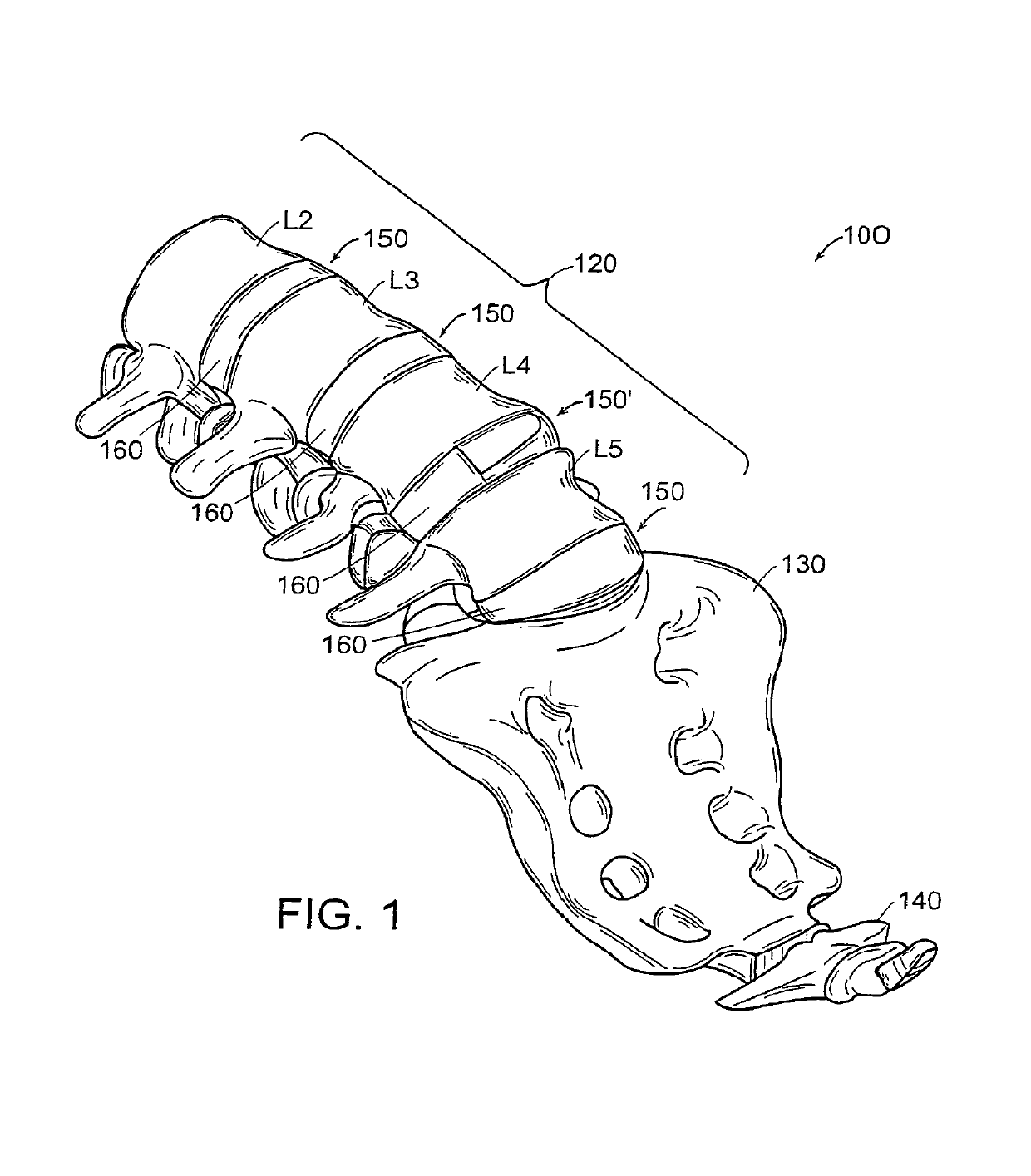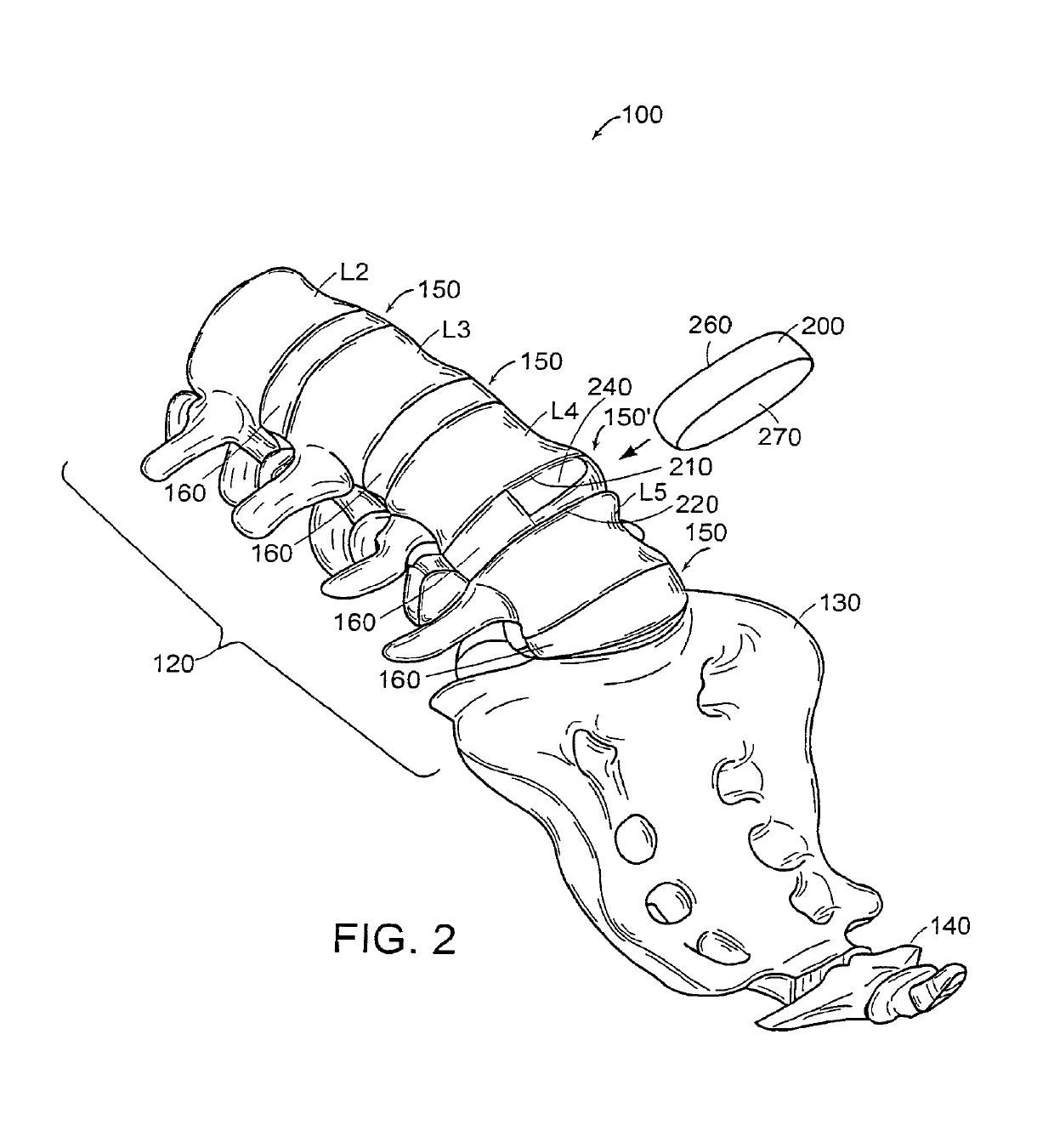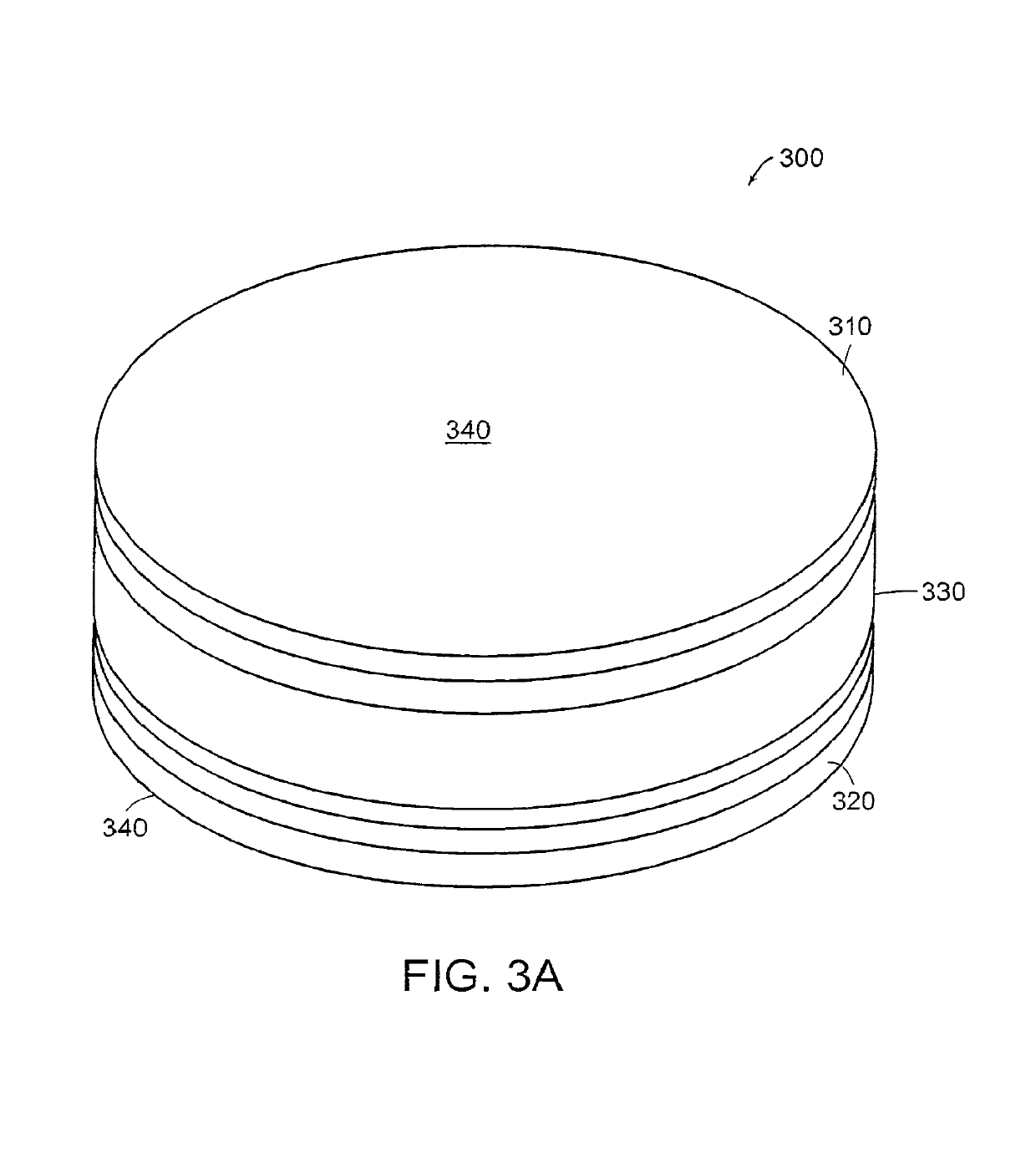Intervertebral implant with conformable endplate
a technology of endplates and intervertebral implants, which is applied in the direction of spinal implants, joint implants, prostheses, etc., can solve the problems of disc space narrowing, disc health, and inability to fit,
- Summary
- Abstract
- Description
- Claims
- Application Information
AI Technical Summary
Benefits of technology
Problems solved by technology
Method used
Image
Examples
Embodiment Construction
[0033]The foregoing and other objects, features and advantages of the invention will be apparent from the following more particular description of preferred embodiments of the invention, as illustrated in the accompanying drawings in which like reference characters refer to the same parts throughout the different views. The same number appearing in different drawings represent the same item. The drawings are not necessarily to scale, emphasis instead being placed upon illustrating the principles of the invention.
[0034]The present invention is related to a conformable implant intended to replace an intervertebral disc which has been removed due to disease, infection, deformity, or fracture, for example. FIG. 1 shows a perspective view of the lower region of a human spine 100. This region includes lumbar spine 120, sacral spine 130, and coccyx 140. The lumbar spine 120 is comprised of five (5) vertebrae L5, L4, L3, L2, and L1 (not shown). Intervertebral discs 150 link contiguous verte...
PUM
| Property | Measurement | Unit |
|---|---|---|
| thickness | aaaaa | aaaaa |
| thickness | aaaaa | aaaaa |
| thickness | aaaaa | aaaaa |
Abstract
Description
Claims
Application Information
 Login to View More
Login to View More - R&D
- Intellectual Property
- Life Sciences
- Materials
- Tech Scout
- Unparalleled Data Quality
- Higher Quality Content
- 60% Fewer Hallucinations
Browse by: Latest US Patents, China's latest patents, Technical Efficacy Thesaurus, Application Domain, Technology Topic, Popular Technical Reports.
© 2025 PatSnap. All rights reserved.Legal|Privacy policy|Modern Slavery Act Transparency Statement|Sitemap|About US| Contact US: help@patsnap.com



